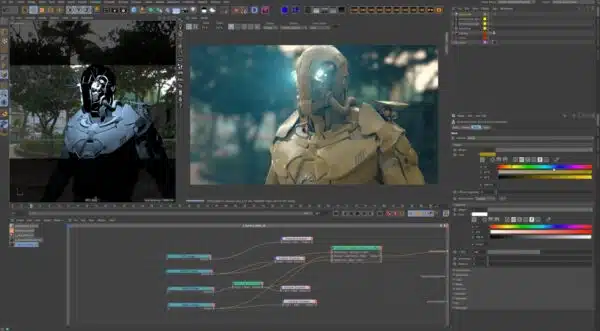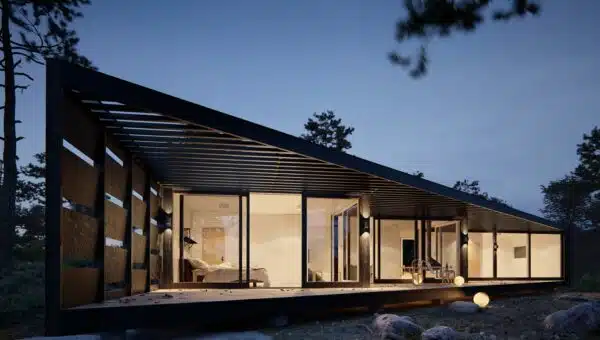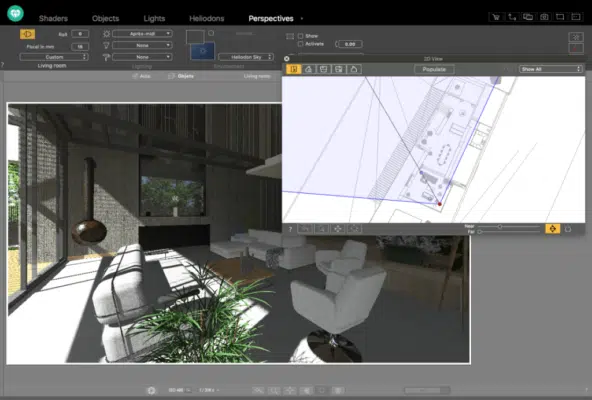3D Engines in 2024

What is 3D Rendering Software?
Content:
In the modern world of 3D modeling and developing, 2024 gave us multiple different choices on computer engines. Although we have all these choices we never know which one is actually good and better? In this article I will be talking about the pros and cons about multiple different Engine choices and which one is the best suit for you. 3D rendering software is a sophisticated computer application designed to create highly detailed and realistic 3D environments. This software plays a pivotal role in various industries, including video games, architecture, product design, and entertainment. It leverages advanced rendering techniques to simulate lighting, shadows, reflections, and other visual effects, resulting in visually striking and immersive experiences for viewers or users.If you are a designer, 3D rendering software will be something you can’t do without. To impress your clients and get the most out of your art, 3D rendering software will play a crucial role.
Why Use 3D Rendering Software?
Content:
It is always important to visualize your designs before they become real and 3D rendering software helps you do that. You can get a realistic view of what your final designs will look like before your project is actually implemented. 3D rendering software isn’t just limited to professionals as there are also plenty of free and affordable options available for all 3D enthusiasts of all levels.
List of the BEST 3D engines in 2024.
- Arnold
- Unreal Engine
- 3Delight
- V-ray
- Atlantis
1. Arnold:

What is Arnold
The best 3D rendering software overall
Arnold by Autodesk is considered one of the industry standards for 3D rendering and for a good reason.Developed initially for Sony Pictures Imageworks, it has seamlessly integrated into Autodesk’s suite.
It is known for its speed and efficiency, but the real-time rendering capability is what sets it apart, allowing dynamic modifications during rendering for quicker visualization. This accelerates the creative process, enabling rapid fine-tuning of your desired visual style.
Arnold also excels in volumetric support, and its node-based material editor aligns with the prevailing trends in the VFX industry.
In addition, plenty of presets are bundled with the software, supplemented by a thriving user community contributing additional nodes. Arnold’s plugins are available for Maya, Houdini, Cinema 4D, 3ds Max, and Katana, so you get plenty of versatility across platforms.
Arnold’s popularity stems from its exceptional image quality and real-time 3D rendering prowess, especially sought-after in cinematic productions. Users laud its user-friendly rendering process and the flexibility to tweak settings on the fly.
Operating seamlessly on Windows, Linux, and macOS, Arnold is also one of the more affordable 3D rendering software available. Monthly fees are priced at $45, while an annual subscription costs $360. For the best value, a 3-year plan is available for $1,025. For those hesitant to commit, you can take a risk-free 30-day to give the software a go.
To summarize, Arnold’s impressive features, adaptability, and affordable subscription plans cement its status as one of the best 3D rendering software options for achieving stunning special effects.
2. Unreal Engine:

What is Unreal Engine
The best 3D rendering software for game development, films, and VFX
Unreal Engine, proudly proclaiming itself as ‘the world’s most advanced real-time 3D creation tool,’ is a revolutionary powerhouse when it comes to 3D rendering software, especially among game developers. Having personally delved into its capabilities, we are left in awe of its multifaceted prowess.
Its applications extend far and wide not only in architecture but also in the gaming, film, automotive, and transportation industries. The VFX technology has graced the grandest of productions, from HBO’s House of Dragon and Games of Thrones to Barbie as well as Fortnite.
The magic of Unreal Engine lies in its ability to transform mundane CAD and BIM models into captivating, photorealistic renders or even immersive VR experiences, all in real time. It is the gateway to crafting interactive visual narratives with an unparalleled level of realism.
Unreal Engine’s inclusivity shines through its compatibility with major modeling software such as Autodesk Revit, Rhino 3D, SketchUp, 3ds Max, and Cinema 4D. This seamless integration ensures that you, designers, can harness its full potential without constraints.
And the most surprising aspect? Unreal Engine offers its brilliance to architects for free. While there are certain conditions for games and films, architects can unleash their creativity without worrying about the cost.
3. 3Delight:

What is 3Delight?
3Delight stands out as the go-to 3D rendering software when it comes to compatibility with industry standards. Having had the opportunity to personally explore its capabilities, we can attest to its remarkable adaptability.
Its seamless integration with widely used programs such as Maya, Houdini, Cinema 4D, Katana, and others makes it a popular choice among beginners and professionals alike.
One of the key features that sets 3Delight is its comprehensive support for the RenderMan shading language. In addition, users can choose between various rendering algorithms, such as path tracing and REYES, for even more flexibility. This adaptability greatly streamlines the filmmaking process.
As expected, 3Delight supports physical materials and uses standards such as OpenExr and OpenVDB. This means that you can seamlessly incorporate physically based materials into your projects, achieving realistic and visually stunning results.
Moreover, the pricing options for 3Delight are quite attractive, catering to both individual users and larger studios. With a completely free version available for single users and affordable subscription tiers starting at $30 per week, it ensures accessibility to quality 3D rendering software for all.
In conclusion, after our detailed and in-depth review of 3Delight, it’s clear that its commitment to maximum compatibility with industry standards, its integration into leading 3D modeling solutions, and its support for rendering algorithms and material standards make it an exceptional choice for anyone looking for 3D rendering software.
4. V-ray:

What is V-ray?
The best 3D rendering software for professional use
Architects and design aficionados alike are likely familiar with V-Ray, renowned for its seamless integration with SketchUp. Developed by Chaos Group, it has solidified its status as an industry staple, offering real-time 3D visualization for various art and design projects.
Under its extensive arsenal, V-Ray boasts an impressive array of tools and textures, ensuring that your creative potential knows no bounds.
Its lightning-fast performance and seamless integration are second to none. While its advanced features might pose a learning curve, the journey to mastering them is well worth the effort.
Compatibility is another feather in V-Ray’s cap, with support for a myriad of 3D modeling applications, including Rhino, Revit, and even integration with Grasshopper.
You can further enrich your workflow with additional Chaos Group offerings like Cosmos for 3D content collections and Vantage for intricate 3D productions.
Contrary to expectations, the cost of V-Ray plugins is surprisingly competitive. For instance, a V-Ray for 3ds Max Workstation license can be yours for $850, and the icing on the cake is the option of a free 30-day trial to test its suitability for your needs before committing.
5. Artiantis:

What is Artlantis?
The best 3D architectural 3D rendering software for beginners
If you are a beginner looking to venture into the world of 3D architectural rendering, Artlantis is one of the best options you can find.
Artlantis’s seamless blend of user-friendliness and a comprehensive feature set makes it a standout option, ensuring that even newcomers can produce stunning 3D renderings that leave a lasting impression.
One of Artlantis’s best features is its exceptional lighting capabilities, catering to both indoor and outdoor scenes. The diverse lighting options, coupled with effects like atmospheres and depth of field, open up a world of possibilities.
Artlantis handles transparent materials effortlessly, replicating the nuanced play of light on curtains and surfaces, while soft shadows and blurs are a breeze to configure.
It also features an integrated MediaStore that offers thousands of ready-to-use 3D elements (characters, plants, or objects)and textures that make it easy to create gorgeous renders in no time.
Moreover, Artlantis boasts a built-in render manager, a true game-changer for efficiency. This feature intelligently distributes the computational load across your local PCs, resulting in lightning-fast render times.
In fact, Artlantis claims that you can create eight full HD images and a full HD ray-tracing rendering in less than a minute.
In conclusion, Artlantis is a stellar choice for beginners in the 3D architectural rendering realm. Its intuitive interface and feature-rich offerings make it an exceptional tool to embark on a journey of creating awe-inspiring 3D renderings that are sure to leave a lasting mark on your clients and colleagues alike.
The UW-milwaukee logo






